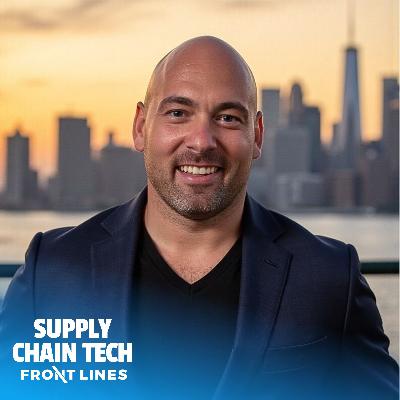How tiun validated product-market fit with 6-12 months of pilot data before scaling | Sandro Zweig
Description
tiun is building auth and payment infrastructure that consolidates two traditional categories into one streamlined solution. By combining social login with instant payment functionality, tiun eliminates the standard account creation and credit card entry flow, reducing user onboarding to a two-click process. Operating as merchant of record, tiun serves online entertainment businesses, content creators, news publishers, and SaaS platforms. The company currently reaches 10 million users monthly through customer website placements and is growing transactions 15-20% month-over-month. In this episode of Category Visionaries, Sandro Zweig shares how tiun evolved from targeting news publishers to building a broader entertainment ecosystem, the challenges of creating a market for a combined category, and the data-driven approach to proving ROI before scaling.
Topics Discussed:
- Evolution from news publisher focus to entertainment and SaaS ecosystem strategy
- Consolidating auth and payment infrastructure into a single category
- Case study metrics: 20% uplift in paying users with under 1% subscription cannibalization
- The 2.5x lead generation improvement versus traditional subscription models
- Building market-specific ecosystems as a B2B2C go-to-market strategy
- DACH penetration strategy before US expansion
- Achieving organic exposure through customer website placement
- Reducing integration complexity to drive adoption in an emerging category
GTM Lessons For B2B Founders:
- Geographic density creates B2B2C flywheels: tiun's go-to-market prioritizes ecosystem density within a single market over broad geographic distribution. Users discover tiun on one platform, then encounter it across 3-4 additional properties in their consumption pattern, creating recognition and repeat usage. This required penetrating DACH (100 million people, single language, unified regulations) before considering US expansion. For B2B2C products where end-user familiarity drives business adoption, concentrate on saturating one market until the consumer-side network effect reduces enterprise sales friction.
- Validate with 6-12 month pilot data before scaling: tiun ran contained pilots with 3-4 customers for a full year before pursuing their long-tail market. This produced case studies showing 20% paying user uplift and under 1% cannibalization—metrics that directly addressed the primary objection (subscription revenue risk). Sandro notes this extended validation period became essential because "there is no market for it yet. We're creating the market." When creating a new category, resist scaling pressure until you have multi-month data that quantifies business outcomes and neutralizes the biggest adoption barriers.
- Strategic revenue trade-offs accelerate ecosystem development: tiun deliberately adjusted pricing to "pay out more to our businesses to grow a bit faster"—prioritizing transaction volume and ecosystem density over near-term take rate. This economics decision reflected that their value proposition strengthens with ecosystem scale: users need to encounter tiun across multiple properties for the solution to deliver its full promise. When building network effects or marketplace dynamics, model whether lower monetization drives the velocity needed to reach critical mass faster than optimizing for immediate margins.
- Integration speed directly determines category creation velocity: Sandro identified that "if the sales cycle is too long and integration is too complicated, people won't do it. Especially since it's a product that doesn't exist and there is no market for it yet." They focused on reducing implementation to 2-3 weeks, recognizing that asking companies to replace existing auth and payment infrastructure requires minimal switching costs. For emerging categories where customers must displace incumbent solutions, integration complexity often determines adoption more than feature superiority.
- Build investor relationships 12+ months before raises: Sandro emphasizes starting fundraising conversations well before needing capital: "If you decide, oh, I need to fundraise right now, then you will automatically get into a cash crunch. Because by the time you have established all the relationships, it just takes such a long time that you run out of money where it really hurts your negotiation power." Treat investor relationship development as continuous rather than transactional—similar to enterprise pipeline development where deals close from relationships built quarters earlier.
//
Sponsors:
Front Lines — We help B2B tech companies launch, manage, and grow podcasts that drive demand, awareness, and thought leadership. www.FrontLines.io
The Global Talent Co. — We help tech startups find, vet, hire, pay, and retain amazing marketing talent that costs 50-70% less than the US & Europe.
//
Don't Miss: New Podcast Series — How I Hire
Senior GTM leaders share the tactical hiring frameworks they use to build winning revenue teams. Hosted by Andy Mowat, who scaled 4 unicorns from $10M to $100M+ ARR and launched Whispered to help executives find their next role.
Subscribe here:
https://open.spotify.com/show/53yCHlPfLSMFimtv0riPyM
























